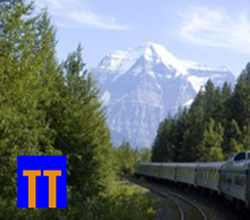How the Freight Railroads Are Screwing Us.
Sometimes we’re confronted with an injustice so obvious and so outrageous that there is only one possible answer—the fix is in.
Here’s a great example:
Back in the 1950s and 60s, when the private railroads were losing hundreds of millions of dollars in the passenger business, they got permission from the federal government to stop carrying people and limit their efforts to hauling freight.
But somebody had to carry passengers, so with federal dollars plus cash from the private railroads, the feds created Amtrak.
And that made sense: Amtrak would take over the passenger business without competition and that would allow the freight railroads to focus on hauling coal and lumber and . . . well, freight.
As part of the deal put together by the government, all three parties agreed that (1) Amtrak would pay the freight railroads each time a passenger train ran on their tracks and (2) the freight railroad dispatchers would give Amtrak trains first preference so that realistic schedules could be established and the passenger trains would run on time.
That was in the 1970s and, from then until now, when it comes to running Amtrak trains on time, the freight railroads have slowly but surely extended a middle finger to the government and to the traveling public.
Last year, Amtrak’s long-distance trains were on time only 41-percent of the time . . . and bear in mind there’s a 30-minute grace period, so that number doesn’t tell us how late they really were.
Well, here’s just one example.
Two years ago in April, I was traveling on the Crescent from Washington to New Orleans. Due to arrive at just after 7:30 p.m., we were almost eight hours late and by the time I got to my hotel, I had been written off as a no-show and my reserved room had been given to someone else.
NEXT TIME: How much of a train ride should $2 billion buy?


